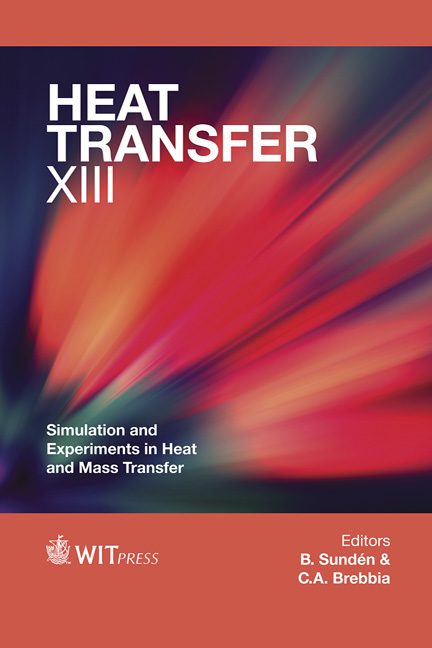The Investigation Of Radiative Heat Transfer Across Molten Mold Flux Film During The Continuous Casting Of Steels
Price
Free (open access)
Transaction
Volume
83
Pages
9
Page Range
51 - 59
Published
2014
Size
678 kb
Paper DOI
10.2495/HT140051
Copyright
WIT Press
Author(s)
D. W. Yoon, J. W. Cho & S. H. Kim
Abstract
The non-uniform heat transfer through mold flux film induces breakout during continuous casting and surface defects on final casting steel products. It is significantly desirable to control the heat transfer rate from steel strand to copper mold during the casting process. Among the various modes of heat transfer through mold flux film, thermal radiation is believed to be dominant during initial solidification near meniscus. However, no systematic investigations have been carried out to understand radiative thermal performances, which consider the regulation of heat transfer behaviour through the glassy mold flux layer. In this study, the thermal behaviour of commercial CaO-SiO2-Na2O based mold fluxes has been investigated by using Fourier transform infrared spectroscopy (FT-IR) and Ultra violet-Visible spectrometer (UV-VIS) in the wavelength range of visible to near infrared to examine the thermal radiation transfer through glassy mold flux disk. Particularly, the effect of basicity and various B2O3 and NiO contents have been inspected. It is found that the heat flux density shows to be decreased by about 3%, strongly affected by the addition of nickel oxide, which has a basicity of 0.95 in a slag system. The increase on absorption coefficients would not lead to an adverse effect on casting operations such as the lubrication of steels in the mold. Hence, it is only logical to optimize the chemical composition of mold fluxes to improve thermal radiative absorption performance between 1–5μm where the maximum radiative energy intensity is emitted in the region. Keywords: continuous casting, heat transfer, mold flux, absorption coefficient.
Keywords
continuous casting, heat transfer, mold flux, absorption coefficient.





